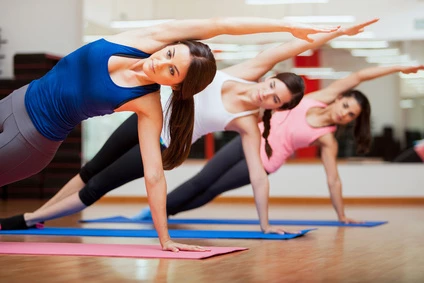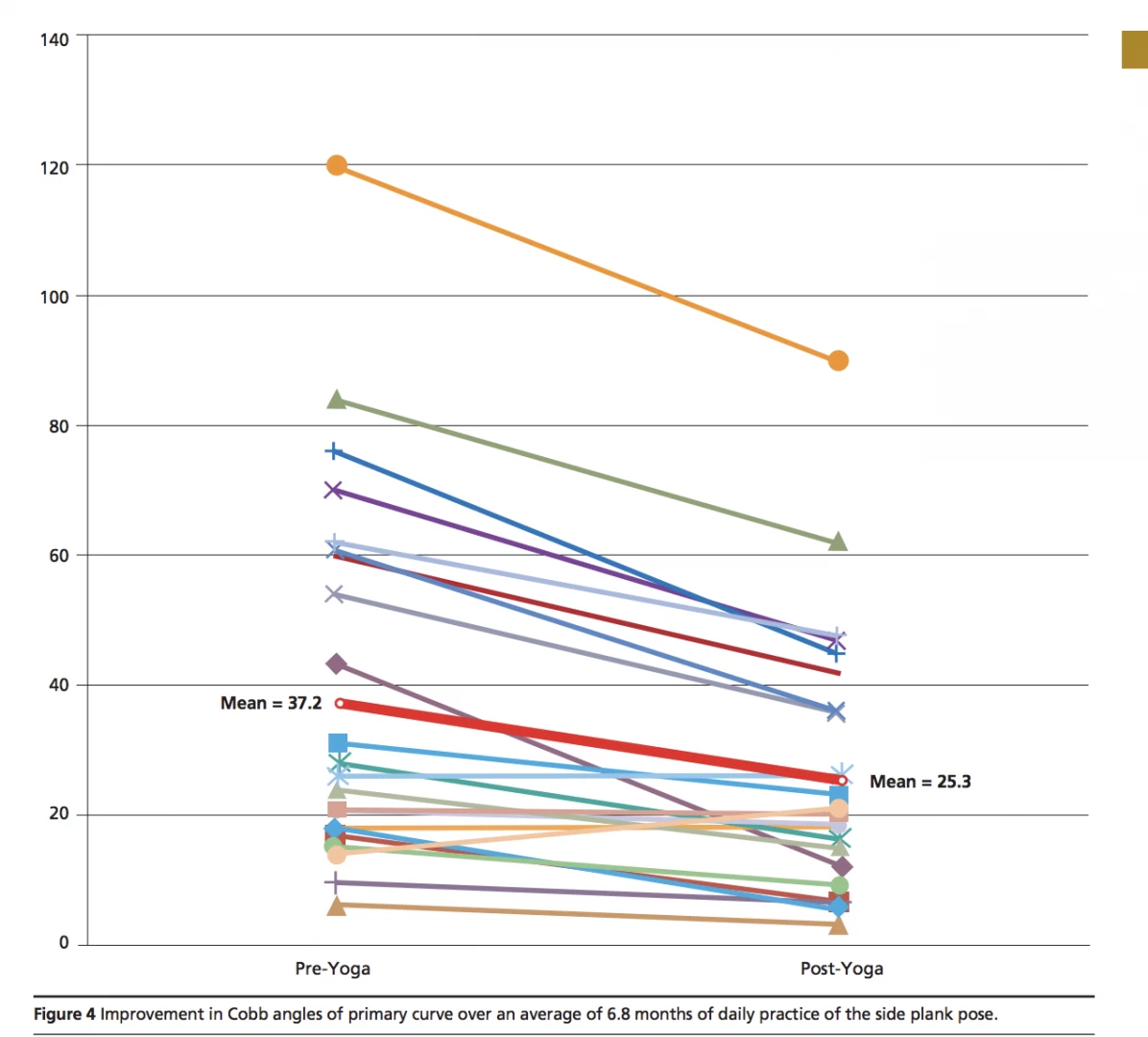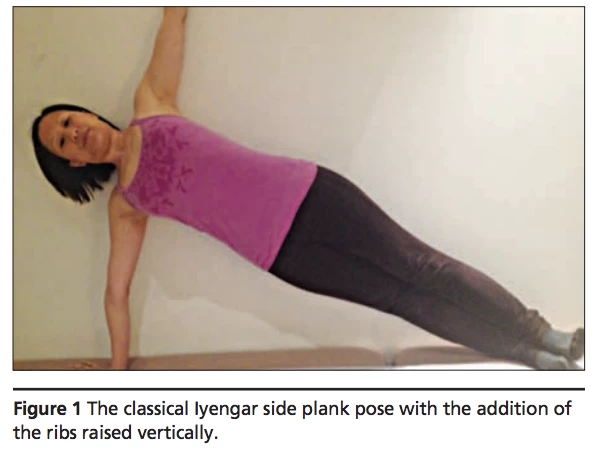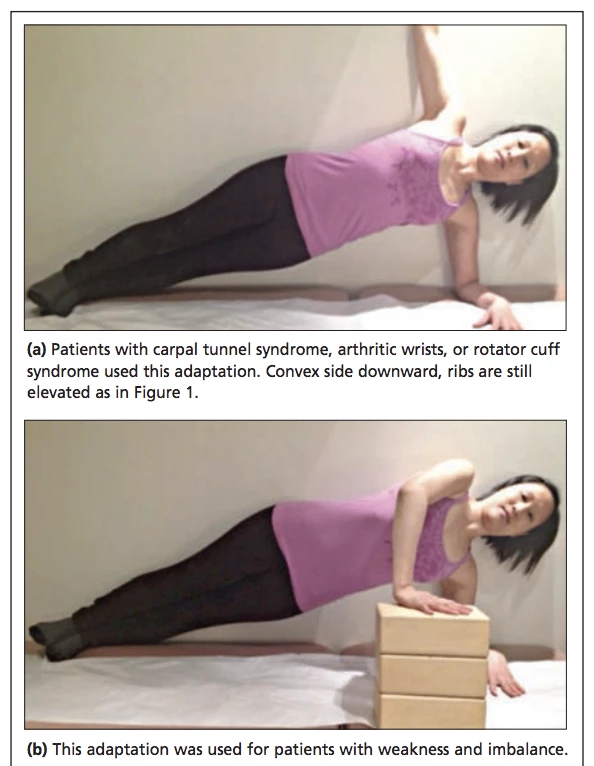Dr. Loren Fishman Publishes Study Indicating that Yoga Can Reduce Scoliosis by 40 Percent

Can a single yoga pose, held for an average of only 1.5 minutes a day, six days a week reduce scoliosis by an average of 40 percent in as little as six months?
 This appears to be the implication of a recently published study by YogaU Presenter Dr. Loren Fishman, a leading pioneer in the therapeutic applications of yoga for chronic physical and structural issues. Dr. Fishman conducted the study in conjunction with researchers Karen Sherman and Eric Groessl, leading researchers in the yoga therapy applications of yoga for back pain.
This appears to be the implication of a recently published study by YogaU Presenter Dr. Loren Fishman, a leading pioneer in the therapeutic applications of yoga for chronic physical and structural issues. Dr. Fishman conducted the study in conjunction with researchers Karen Sherman and Eric Groessl, leading researchers in the yoga therapy applications of yoga for back pain.
The study found that regular practice of Side Plank (Vasisthasana) was effective in reducing idiopathic scoliosis curves for both adolescent and adult patients an average of 40 percent. All participants did the Side Plank (Vasisthasana) yoga pose on one side only – the side of the curve.
The study, published in the September 2014 issue of Global Advances in Health and Medicine is the first peer-reviewed published trial studying yoga for the reduction of scoliosis curves (see full reference below). It included 25 participants, whose spine was evaluated using before and after X-rays using the standard Cobb method for measuring scoliosis curvature.
Nineteen participants completed the requirements of the study, practicing the yoga posture more than three times a week. Their progress was then evaluated after a mean follow-up period of 6.8 months (ranging from 3 to 22 months later), and the pre- and post-yoga Cobb measurements were compared.
The overall improvement in spinal curvature was 40 percent, but within the group, adolescents improved more than adults at 49.6 percent, or almost half. Still, adult participants improved 38.4 percent.
Scoliosis is a spinal disorder characterized by an abnormal sideways curvature of the spine. It manifests in three main forms—congenital scoliosis, which develops either during fetal development or shortly after birth; neuromuscular scoliosis, which is linked to muscle weakness or lack of normal muscle control; and idiopathic scoliosis, which is scoliosis of unknown origin. Of the three, idiopathic scoliosis is by far the most common, often becoming apparent during adolescence.
In addition to spine curvature, common symptoms of scoliosis include unusually tilted shoulders or hip bones, pain in their lower back and physical fatigue associated with extended sessions of standing or sitting. Severe scoliosis can cause significant health problems if progressing into severe curvature. Scoliosis causes 600,000 doctor visits annually in the United States, and 38,000 patients have spinal fusion surgery, according to the NSF. The annual cost runs in the billions, not to speak of the physical and emotional toll the condition takes on people struggling with severe scoliosis.
The most common conservative treatment for scoliosis is bracing. Braces are usually worn for twenty-three hours a day. One of the most popular bracing methods calls for patients (usually adolescent girls) to take part in 40 2-hour sessions three times per week for three-four months. Patients are then advised to continue exercises for half an hour a day as long as they live.
 “Since many scoliosis patients are adolescent girls, the unwieldy bracing and lengthy exercising is socially awkward, emotionally painful and physically difficult,” says Dr. Fishman, MD. “And yet untreated scoliosis can progress at 7% per year, and result in disability and life-threatening health risks.
“Since many scoliosis patients are adolescent girls, the unwieldy bracing and lengthy exercising is socially awkward, emotionally painful and physically difficult,” says Dr. Fishman, MD. “And yet untreated scoliosis can progress at 7% per year, and result in disability and life-threatening health risks.
Non-surgical techniques for treating scoliosis frequently focus on realigning the spine, typically by muscular relaxation or muscular or ligamentous stretching. However, such treatments, which include physical therapeutic, chiropractic, and bracing techniques, are inconsistently supported by current evidence, Dr. Fishman notes.
The present study focused on the benefits of asymmetrical strengthening of the trunk muscles on the convex side of the scoliotic curve through a single yoga pose, the side plank pose.
“Since scoliosis is an asymmetrical condition, I have treated it asymmetrically, asking patients to do the pose on the weaker side only. That strengthens the specific spinal muscles on the convex side that are needed to help with curve reduction,” says Dr. Fishman. “While the National Scoliosis Foundation (NSF) recommends twenty-five yoga poses, it does not cite clinical results and does not suggest that the poses be done asymmetrically.”
Other research with 15 hours a week of exercises found improvements, but it measured the spinal twist that results from advancing scoliosis, not the curve. Dr. Fishman believes the curve is what needs to be treated, that it comes first and causes the twist.
“Asymmetrically strengthening the convex side of the primary curve with daily practice of the Side Plank (yoga pose) held for as long as possible (up to 2 minutes) for 3 to 22 months appeared to reduce the primary sclerotic curve,” the paper concludes. Dr. Fishman believes further research is warranted.
Curious to Learn More? Check Out Our Online Course on Yoga for Scoliosis with Dr. Loren Fishman and Ellen Saltonstall!
 Yoga for Scoliosis—Relieving Pain, Restoring Balance.
Yoga for Scoliosis—Relieving Pain, Restoring Balance.
Reference: “Serial Case Reporting for Idiopathic and Degenerative Scoliosis,” Dr. Loren Fishman, Karen Sherman, Eric Groessl. Global Advances in Health and Medicine, September 2014, Vol. 3, No. 5: pp. 16-21



